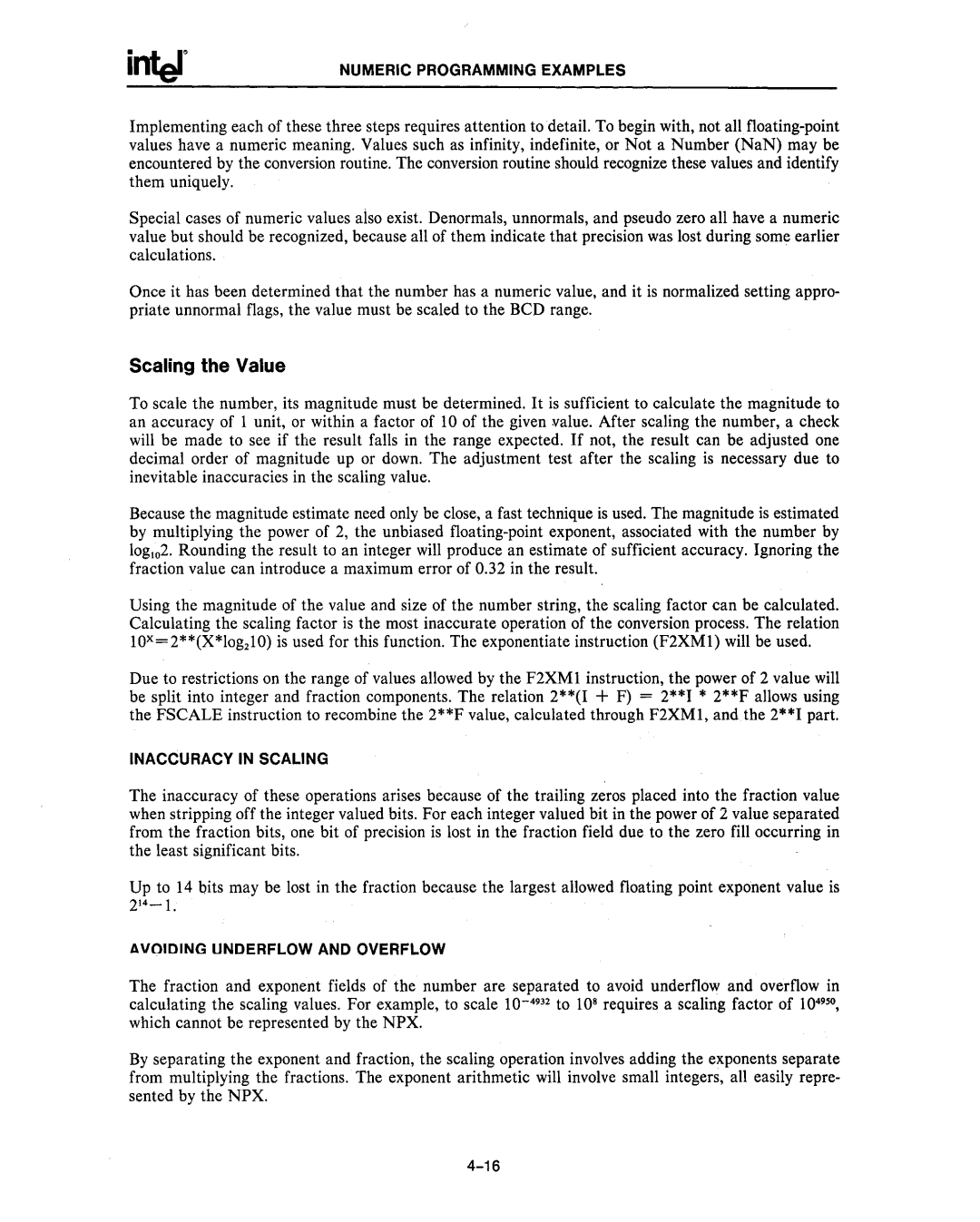
NUMERIC PROGRAMMING EXAMPLES
Implementing each of these three steps requires attention to detail. To begin with, not all
Special cases of numeric values also exist. Denormals, unnormals, and pseudo zero all have a numeric value but should be recognized, because all of them indicate that precision was lost during some earlier calculations.
Once it has been determined that the number has a numeric value, and it is normalized setting appro- priate unnormal flags, the value must be scaled to the BCD range.
Scaling the Value
To scale the number, its magnitude must be determined. It is sufficient to calculate the magnitude to an accuracy of 1 unit, or within a factor of 10 of the given value. After scaling the number, a check will be made to see if the result falls in the range expected. If not, the result can be adjusted one decimal order of magnitude up or down. The adjustment test after the scaling is necessary due to inevitable inaccuracies in the scaling value.
Because the magnitude estimate need only be close, a fast technique is used. The magnitude is estimated by multiplying the power of 2, the unbiased
Using the magnitude of the value and size of the number string, the scaling factor can be calculated. Calculating the scaling factor is the most inaccurate operation of the conversion process. The relation IOx=2**(X*log210) is used for this function. The exponentiate instruction (F2XMl) will be used.
Due to restrictions on the range of values allowed by the F2XMl instruction, the power of 2 value will be split into integer and fraction components. The relation 2**(1 + F) = 2**1 * 2**F allows using the FSCALE instruction to recombine the 2**F value, calculated through F2XMl, and the 2**1 part.
INACCURACY IN SCALING
The inaccuracy of these operations arises because of the trailing zeros placed into the fraction value when stripping off the integer valued bits. For each integer valued bit in the power of 2 value separated from the fraction bits, one bit of precision is lost in the fraction field due to the zero fill occurring in the least significant bits.
Up to 14 bits may be lost in the fraction because the largest allowed floating point exponent value is
AVOIDING UNDERFLOW AND OVERFLOW
The fraction and exponent fields of the number are separated to avoid underflow and overflow in calculating the scaling values. For example, to scale
By separating the exponent and fraction, the scaling operation involves adding the exponents separate from multiplying the fractions. The exponent arithmetic will involve small integers, all easily repre- sented by the NPX.
